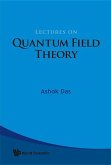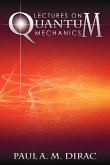This book is based on material taught to final-year physics undergraduates as part of the theoretical physics option at Imperial College. After a self-contained introduction to the essential ideas of vector spaces and linear operators, a bridge is built between the concepts and mathematics of classical physics, and the new mathematical framework employed in quantum mechanics. The axioms of nonrelativistic quantum theory are introduced, and shown to lead to a variety of new conceptual problems. Subjects discussed include state-vector reduction, the problem of measurement, quantum entanglement, the Kochen-Specker theorem, and the Bell inequalities. The book includes twenty-five problems with worked solutions. In the US it could serve as an excellent supplement for an introductory graduate course on quantum mechanics ... The discursive style and clear exposition make for equally attractive reading by someone familiar with the subject or by a student with only rudimentary knowledge .... The main text is supplemented by a substantial number of problems with solutions, which should help the beginner master the mathematics .. I would strongly recommend that anyone teaching the subject use this little book as supplementary reading". Physics Today (USA), Aug 1996 "The proper role of mathematics is to make things easy. When something can be expressed in the precise language of mathematics, results can be obtained by the application of given rules. Calculations are so simple that even computers can do them. Chris Isham's lectures on the mathematical and structural foundations of quantum theory, reproduced in this book, provide an excellent illustration of this truth ... a welcome addition tothe modern literature on quantum theory ... It is good to have a book that gives such an excellent description of the mathematical structure of quantum theory ..". Times Higher Educational Supp. (UK), 1996








